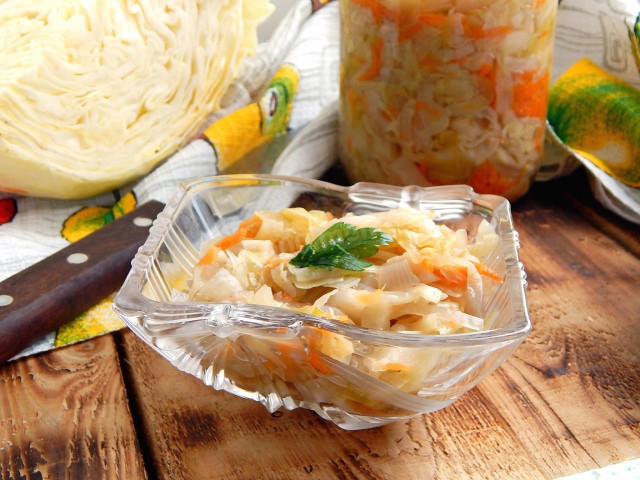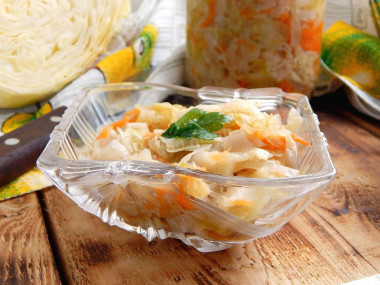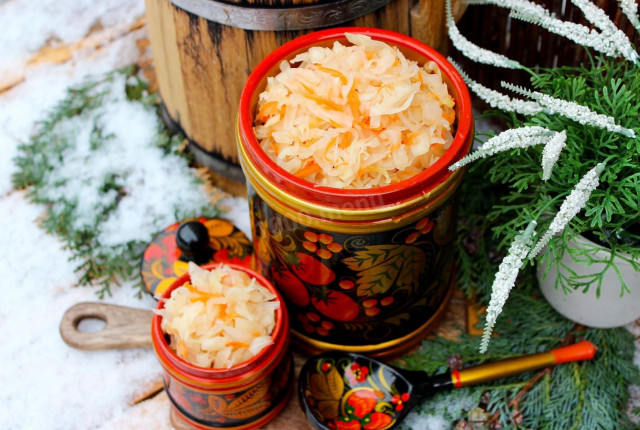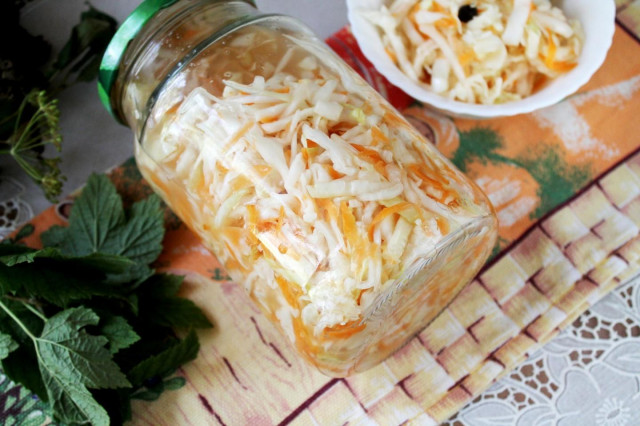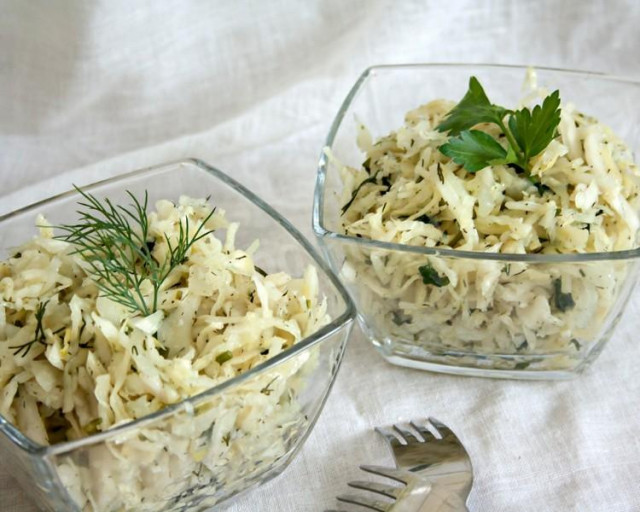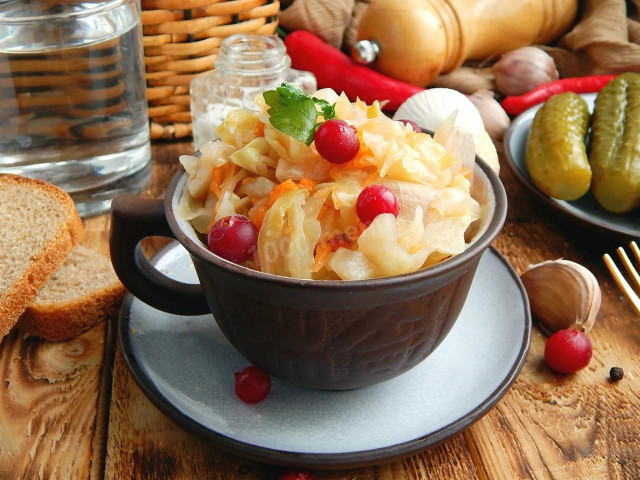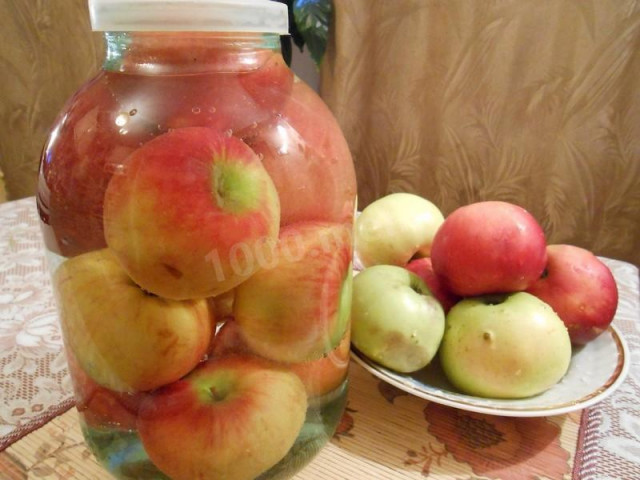Composition / ingredients
Step-by-step cooking
Step 1:
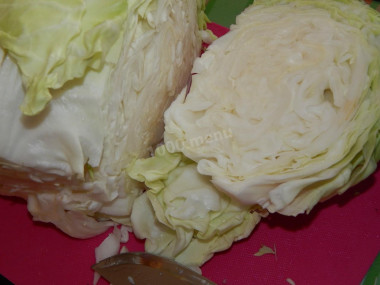
Prepare the ingredients for a cabbage snack. As a rule, white cabbage is fermented in late autumn, when it contains the maximum amount of lactic acid. The cabbage head is cleaned from the upper dry and dirty leaves, cut into two parts, remove the stalk.
Step 2:
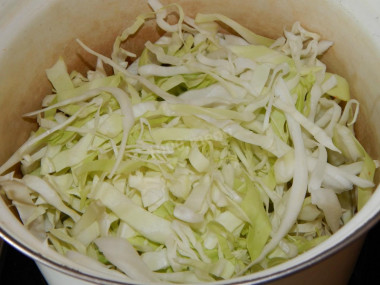
Cut the cabbage into thin strips or small pieces. But you can just cut into large pieces that will easily fit into the jar in the future, it will turn out faster, but the size of the shape of the cabbage pieces does not affect the taste.
Step 3:
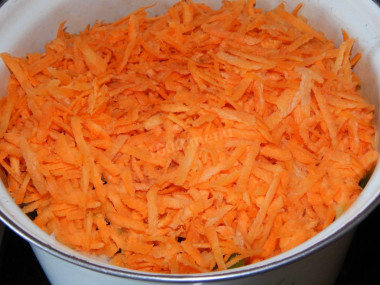
Carrots are washed, cleaned and grated on a coarse grater. We put the cooked carrots in a container with cabbage. It is better to saute cabbage in an enameled large saucepan or other dish that will not oxidize from interaction with vegetable juice. Add dill seed to the cooked cabbage and carrots. Mix everything thoroughly and knead the vegetables with your hands for a few minutes so that they let the juice.
Step 4:

On top of the cabbage, you need to put pressure, for example, a smaller pot with water, so that the juice is actively released from the vegetables. We leave the workpiece at room temperature for two days. It is better to put the pan in a basin so that the juice does not leak out onto the floor or table.
Step 5:
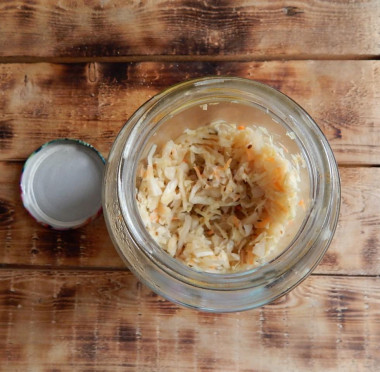
After the specified time, the cabbage billet is laid out in clean sterilized jars, closed with lids and put them away for storage in the refrigerator or other cool place.
Step 6:

Sauerkraut is ready. You can serve it to the table as a healthy and delicious salad, adding chopped onions and seasoning with vegetable oil, or use it for cooking soups and other dishes. In some recipes of sauerkraut, in addition to carrots, beets, apples, cranberries and other additives are added. They will improve the taste of the finished dish, give a special flavor, and also complement the vitamin composition. Bon appetit!
The shelf life of sauerkraut directly depends on the ambient temperature:
- in the cellar and in the refrigerator, subject to the tightness of the container and compliance with the temperature regime from 0 to +4 degrees, the product remains usable for up to 5-8 months;
- it is stored frozen for up to a year (you can put the finished sauerkraut in plastic bags, seal it tightly, leaving enough space for the brine to freeze, and put it in the freezer);
- at room temperature, the product will deteriorate in 3 days;
- at a temperature of +10 degrees, cabbage will stand no longer than 10-15 days.
Caloric content of the products possible in the composition of the dish
- Carrots - 33 kcal/100g
- Dried carrots - 275 kcal/100g
- Boiled carrots - 25 kcal/100g
- Dill greens - 38 kcal/100g
- White cabbage - 28 kcal/100g
- Boiled white cabbage - 21 kcal/100g

